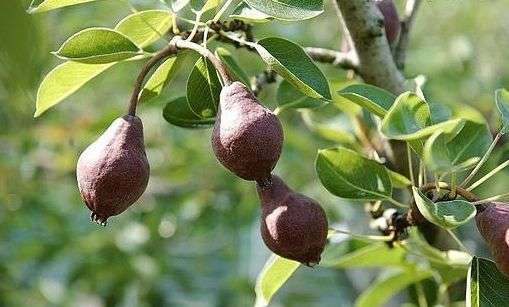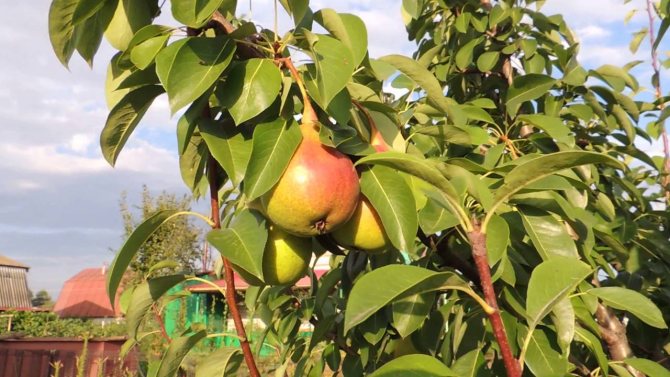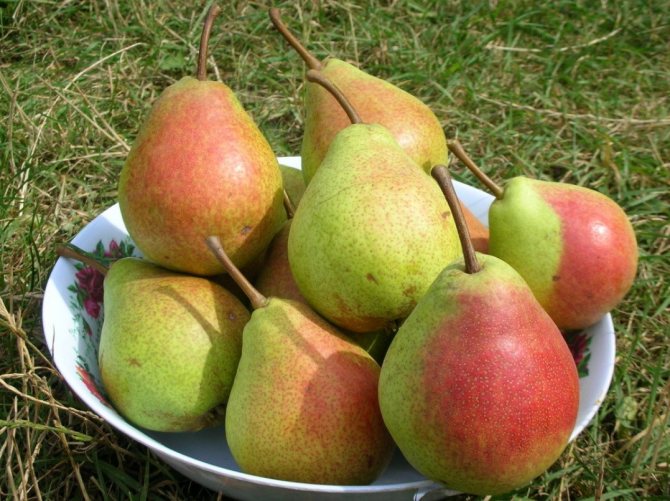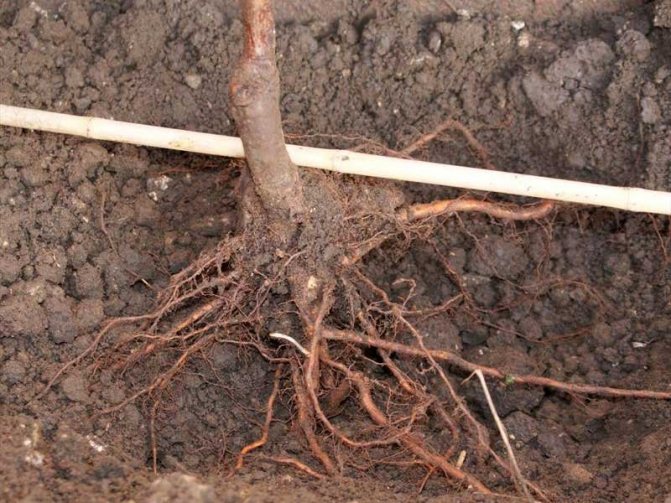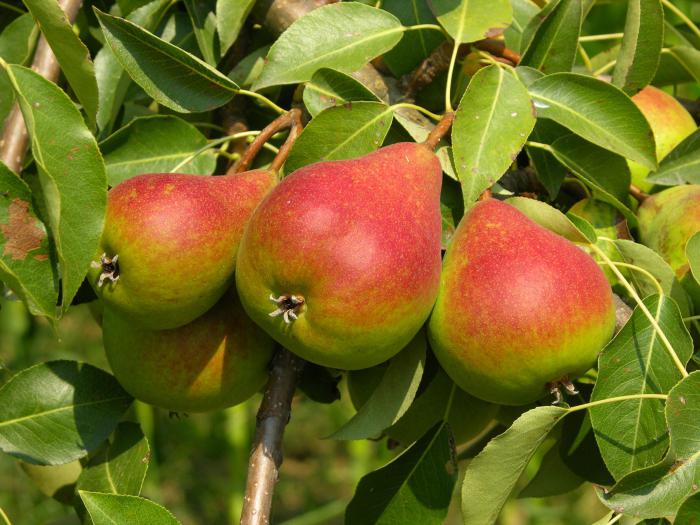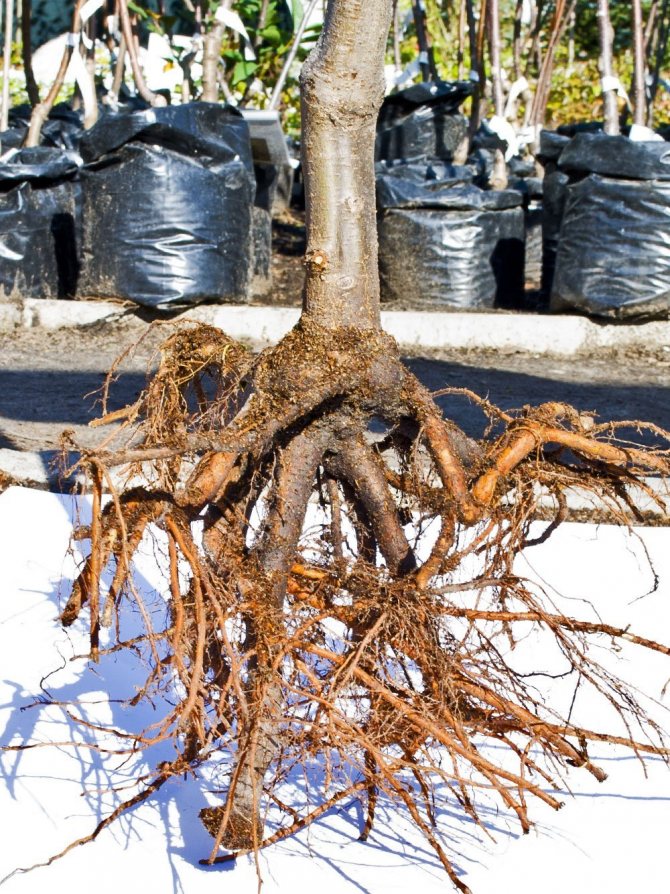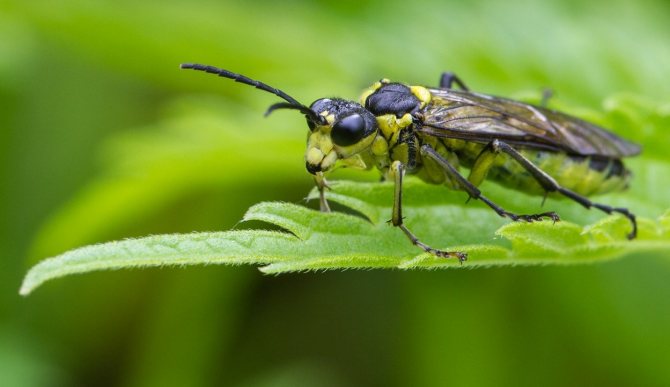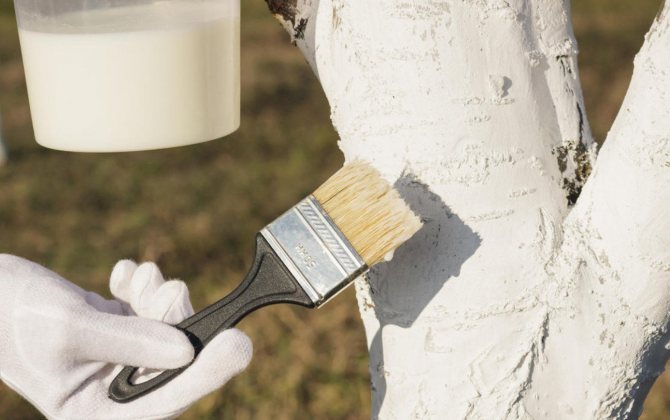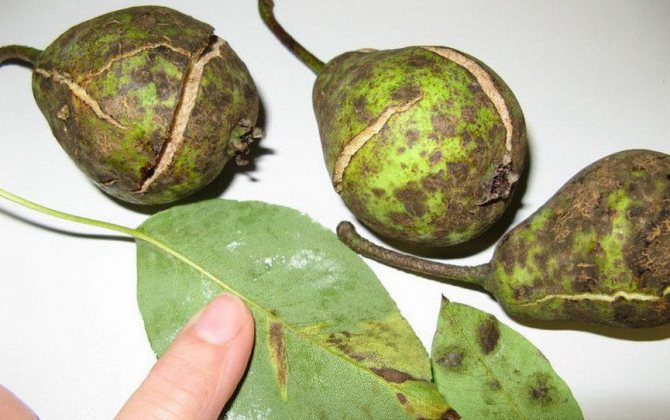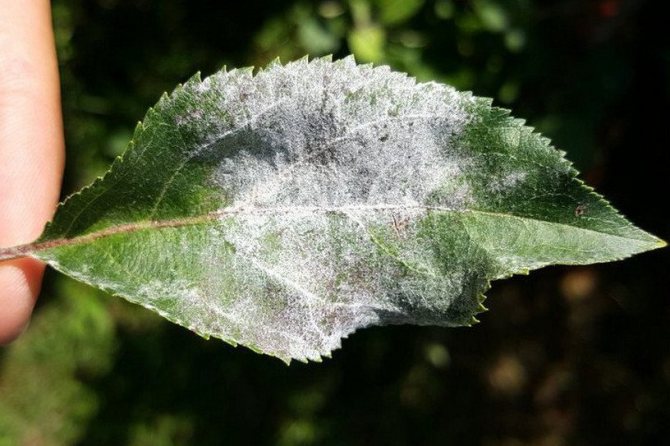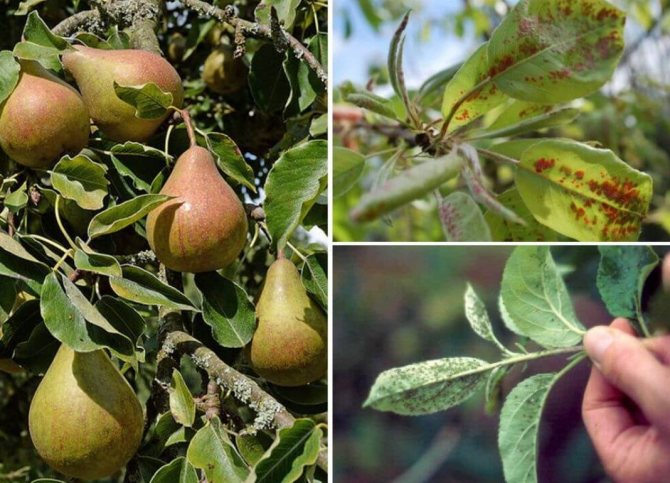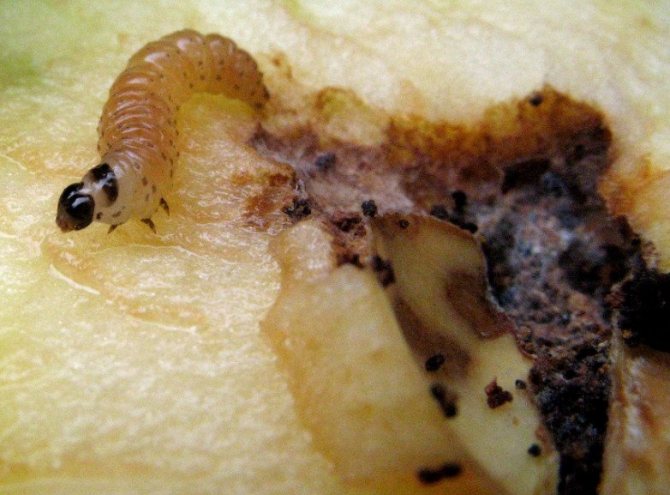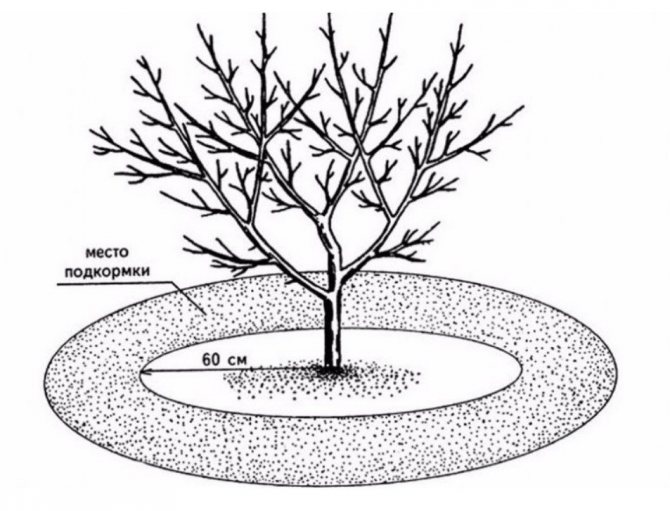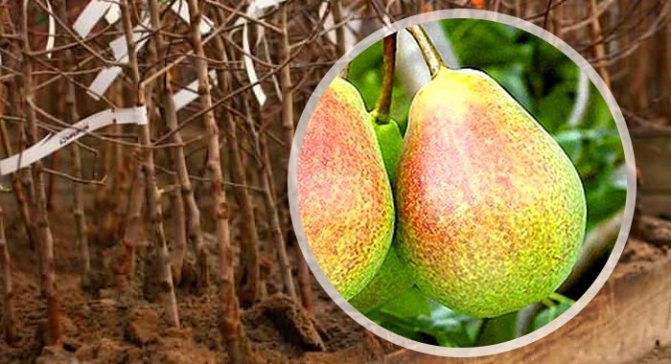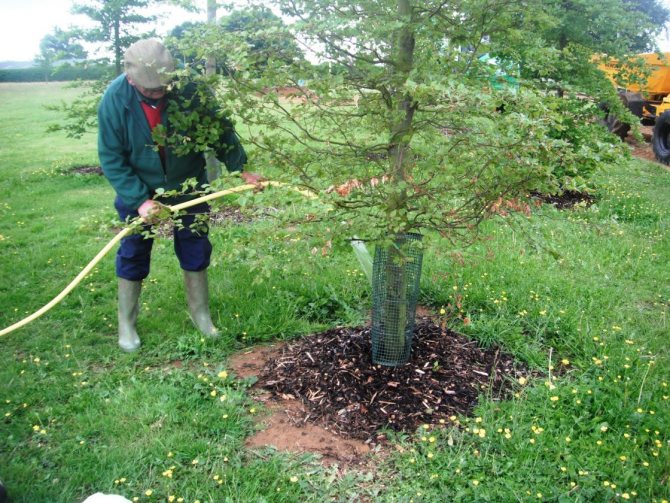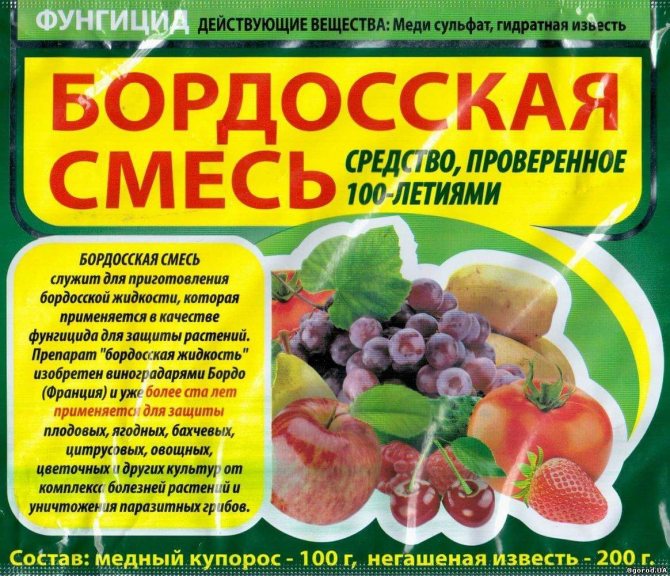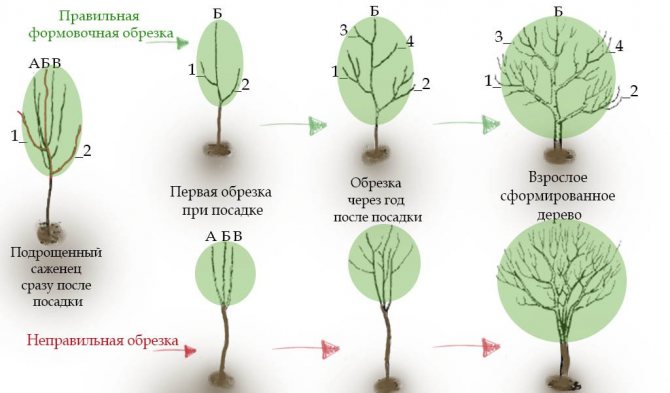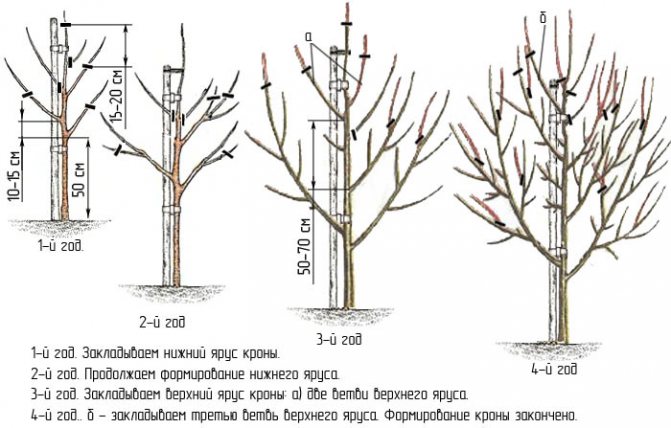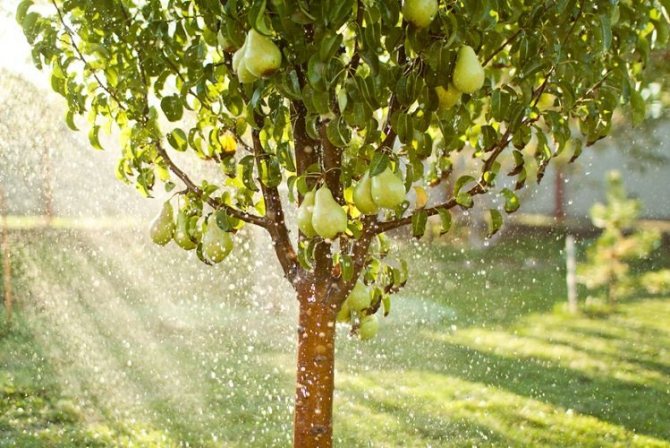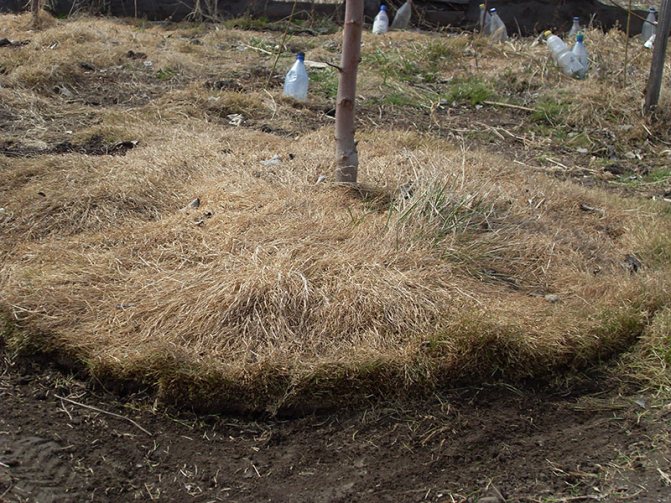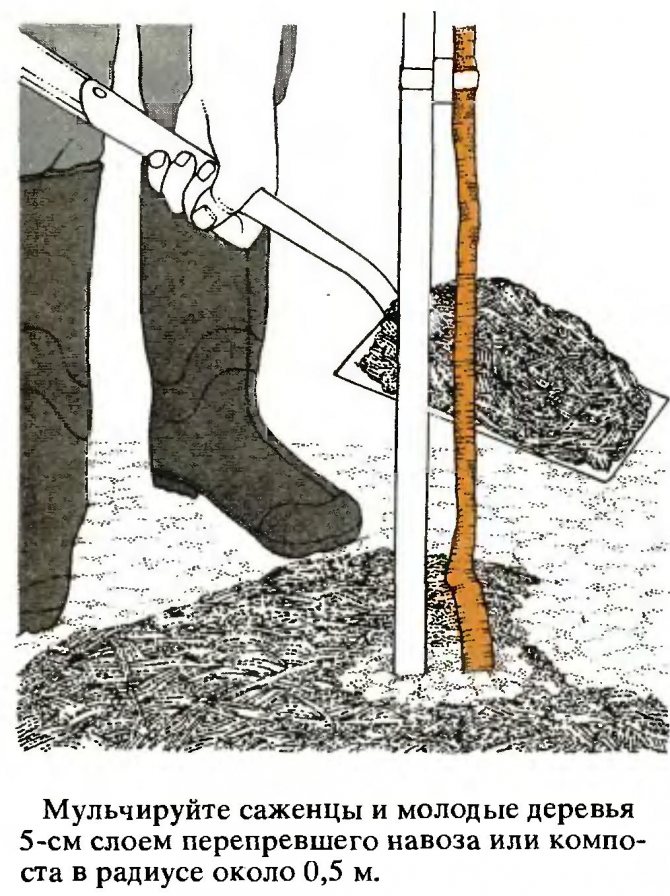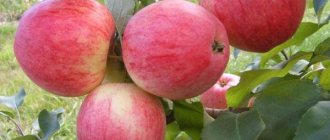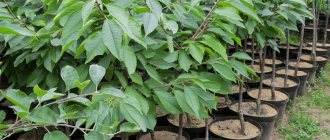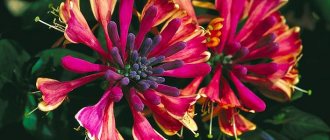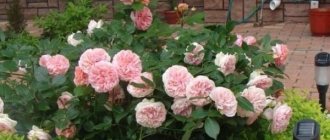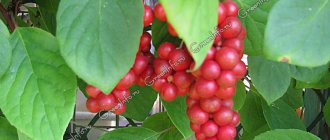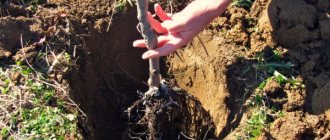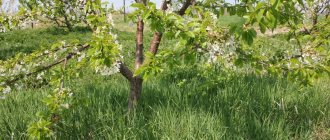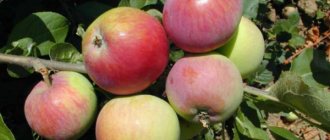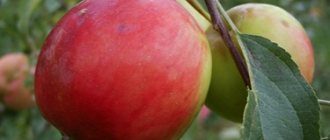Pear variety Lyubimitsa Klappa - a description of the appearance and other characteristic features
Clapp's Favorite is a very respectable pear variety that will soon celebrate its 150th anniversary. It is sometimes found in catalogs called Favorite Klappa or Favorite. The hybrid was bred by a breeder from the United States T. Clapp, and was named after the author. Its "parents" are Lesnaya Krasavitsa and Williams varieties. Both are distinguished by their excellent taste and belong to the group of the first successful experiments in the field of pear breeding.
There is a version according to which Klapp's Favorite is the result of a spontaneous mutation of one of the mentioned varieties.
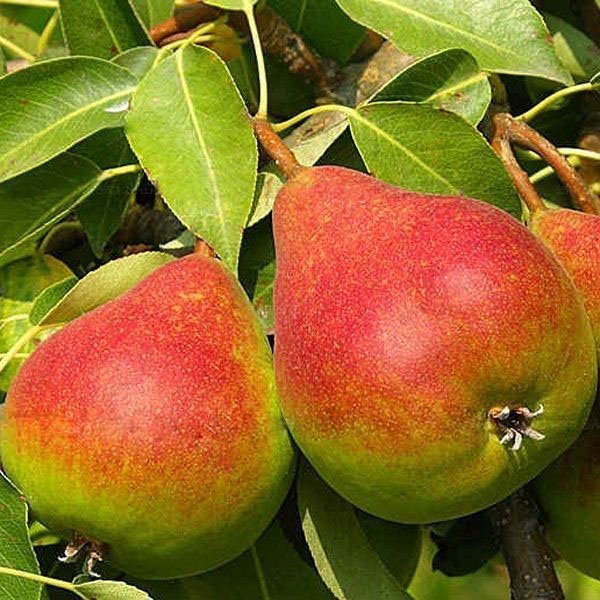
Pear Lyubimitsa Klappa - a variety with a long history
In Russia (then the USSR) they got acquainted with the variety in the middle of the 20th century. Favorite Klappa perfectly suited for cultivation in the North Caucasus region and the Kaliningrad region. Gardeners from the Baltics, Moldova, Ukraine and Belarus immediately fell in love with her. Over time, the variety acquired greater winter hardiness and was successfully zoned for cultivation in the Lower and Middle Volga regions.
Klapp's favorite is a vigorous tree with a spreading crown, which rounds out with age, taking the shape of a ball instead of the initial pyramid. Young seedlings show especially high growth rates. Shoots, formed 2-3 seasons ago, slightly nod, then lignify, "straighten".


Clapp's favorite is a rather tall tree with a spreading crown, so it's not easy to care for it
The variety is self-fertile, without pollinators, the fruits are not set. It is advisable to have at least 3 different trees. Suitable "companions" are:
- Williams;
- Ilyinka;
- Forest Beauty;
- Panna;
- Saint Germain;
- Winter Deccan;
- Bere Bosk;
- Ligel;
- Olivier de Serre;
- Bere Giffard.
Klapp's favorite cannot boast of a speediness. The first pears are removed 7–8 years after the tree is planted. But the term of "productive" life is 50–55 years. With competent care, it can be extended for another 10-15 years. The yield is high - in especially successful years, about 300 kg of fruits are harvested from one tree.


Favorite Clapp's harvest almost always pleases the gardener
The ripening period depends on the climatic features of the area in which the pear grows, and the weather in spring and summer. In favorable conditions of the southern regions, the fruits are harvested at the end of July or the first decade of August. Where the weather is more severe (Moscow region, etc.) - on the 20th of August.
Fruits are classic pear-shaped, slightly flattened along the vertical axis, weighing on average 180–240 g.
Pears weighing up to 280 g ripen on young trees, with age the fruits become smaller to 110-140 g, but this does not affect the taste in any way.
The skin is glossy, sunny yellow, where it is illuminated by the sun, a bright carmine "blush" is formed. Light tuberosity, slight rustiness at the base of the fruit and small subcutaneous points fit into the norm. Unripe pears have a greenish tint.
The taste qualities of ripe pears receive only praise (even from the most fastidious connoisseurs). The snow-white pulp is very tender and juicy, sweet, without pronounced granularity, with a slight wine flavor and barely noticeable sourness.Professional tasters rate the taste at 4.7-4.8 points out of 5, and children simply love these pears very much and will never give up on them.


The snow-white flesh of Favorite Clappa is distinguished by excellent taste.
The variety is versatile. In addition to fresh consumption, Lyubimitsa Klappa is suitable for home canning, baking, drying, and drying. Fresh fruits will last for a maximum of 10-15 days. If you remove them slightly unripe, the shelf life can be extended by 5-7 days, but no more. Such pears tolerate transportation well.
Breeders continue to experiment with Clapp's Pet. At the moment, more than 20 varieties have been registered, bred with her participation. The most successful hybrids are Modest, Nadyadnaya Efimovka, Tatiana, Orlovskaya Letnyaya, Severyanka and Usolka.
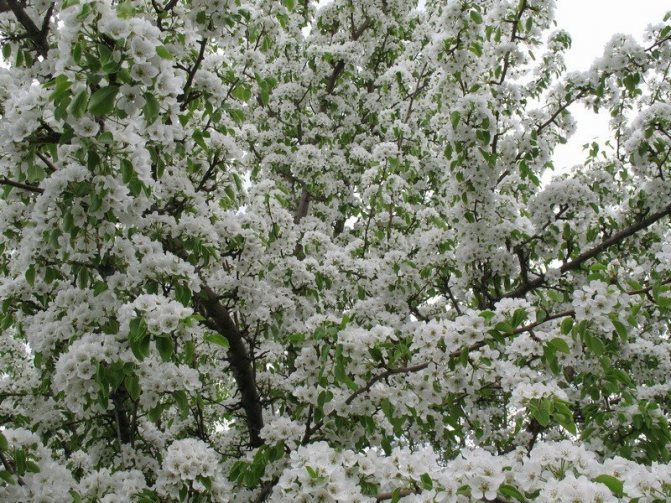

Favorite Klapp not only brings a harvest of delicious pears, but also blooms beautifully
Yield
Begins fruiting Klapp's favorite late. The first fruits appear 7-8 years after the seedling is planted. Fruiting is regular and generous, gardeners remove up to 300 kg from one adult tree.
Reference. Pear Klapp's pet can grow and bear fruit for 80 years, but usually the tree lives for about 60 years.
The ripening period of the fruits (late July - mid August) depends on the region. The peculiarity and disadvantage of the variety is the shedding of overripe fruits. Unripe plucked fruits are inferior in taste to fruits picked in time. It is recommended to harvest pears 2 weeks before the onset of consumer maturity.
Advantages and disadvantages of a hybrid
Summarizing the above, the following undoubted advantages of the Lyubimitsa Klapp pear variety can be noted:
- The size and taste of the fruits, their good transportability.
- Long tree life and rare breaks in fruiting, consistently high yield.
- Undemanding in relation to the soil (insufficient fertility is easily corrected by the introduction of the necessary fertilizers).
- Good cold resistance. Pears hibernate almost without loss at -25–30 ° C, at -35 ° C they survive, but with significant damage. Flowering is not too early, but even if return spring frosts occur, flowers rarely suffer from them.
There are no varieties without flaws. In this case, these are:
- The inability to keep the fruits fresh for a long time.
- Mass fall of ripe fruits, deterioration of the taste of ripe pears, if not harvested.
- The need for regular scab control.
- Self-infertility.
- The considerable height of the tree, the spreading of the crown, which makes it difficult to care for the pear.
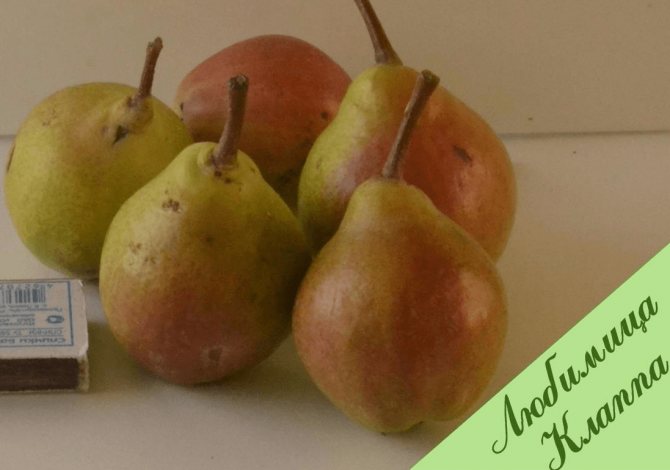

The variety Petite Klappa has many advantages that make it enduring popularity among gardeners.
Is the yak a variety?
Variety Ulyublenitsya Klappa, bust in the 19th century in America, known as a huge man on the nickname Klapp. The very name went to the variety. Surely it is not seen, as varieties of pears were put on the basis. In the Danish hour, the selectionists came to Visnovka, where one of the "fathers" of the Ulyublenitsa Klappa became a pear to the Lisova Krasunya variety. Yak bi there was not, ale pear Love Klappa and doniny majestic success with gardeners in all sorts of people, so as to see them as wonderful relish. Vona became a love affair not only for her creator, but for quiet, who would like to have tasted the fruit once.
Planting procedure and preparation for it
The pear is planted both in spring and autumn. Spring planting is the preferred option for temperate climates. The optimal time is from 20 April to mid-May. In warm southern regions, the Klappa's favorite pear can also be planted in autumn (during September). For the time remaining before frost, the tree will have time to acclimatize.
The advantage of planting in spring is that the tree will probably have time to take root and adapt to new habitat conditions before winter. But in the fall in nurseries, the choice of seedlings is much wider.
Seat selection
Favorite Klapp, like all pears, is photophilous. It does not suffer from strong gusts of wind, so the place can be open. Still, it is recommended to protect the plant from cold drafts - sharp gusts of the north and north-west wind can negatively affect the yield.
The plant is undemanding to the soil, but the best option is light fertile loam or sandy loam soil. The substrate should be loose, but sufficiently nutritious and good at retaining moisture. Favorite Klapp categorically does not tolerate groundwater too close to the surface. If they are higher than 3 m, look for another place. The selected area should not be rocky. The roots of the pear, of course, are not so fragile, but regularly come across "obstacles" can injure them. Clapp's pet will not grow on overly saline soil.
Choose a place for a pear tree relatively even. A slight slope is acceptable, but not the slope of a steep hill or lowland, in which moist cold air and melt water regularly accumulate.
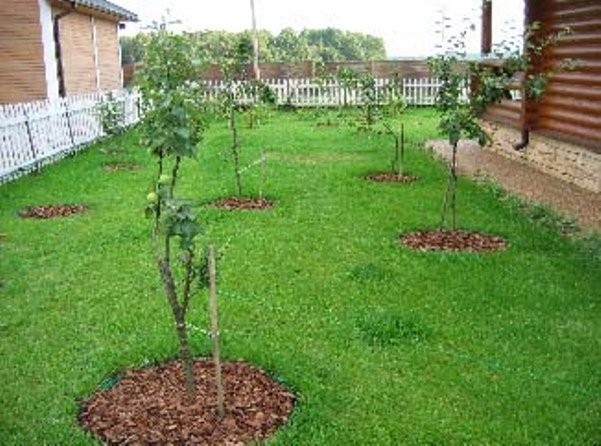

Pears suffering from lack of sunlight become smaller and not as sweet as they could be.
Even one pear occupies a fairly large area. And Pet Klapp also needs pollinators. A distance of 5–6 m is maintained between trees. When laying a pear orchard, 7–8 m are left between the rows of plantings.
Choosing the wrong place for planting can be fatal for a pear. This tree is very difficult for transplanting and often dies after this procedure.
The pear is planted as far as possible from the mountain ash. These plants suffer from the same diseases, are affected by the same pests. But Dear Klappa has nothing against the neighborhood with the apple tree.
Preparatory procedures
If planting is planned in the spring, dug a hole in the fall. You need to start preparing for the autumn planting 2-3 weeks in advance. The diameter is 65–80 cm, the depth depends on the type of soil. The heavier it is, the more you need to deepen the roots (from 80 to 120 cm).
The soil extracted from the pit first of all is laid separately. To it add 25-30 liters of humus or rotted compost, 15-20 liters of coarse river sand or expanded clay, pebbles, 150 g of simple superphosphate and 80-100 g of potassium nitrate. The finished mixture is poured onto the bottom of the pit and the hole is covered with a material that does not allow water to pass through to protect the mound from erosion.
It is not recommended to apply nitrogen-containing fertilizers, fresh manure and dung. They burn out insufficiently strong roots and stimulate the intensive formation of green mass, which the root system is unable to "feed".
Planting a seedling
There is nothing complicated in the landing procedure, but it is better to do it together:
- The day before planting, the dead or decaying roots are cut off from the seedling, the tree is soaked in a solution of a root formation stimulator. For disinfection, add several crystals of potassium permanganate to the container.
- Immediately before planting, the roots are dipped in a creamy mass - a mixture of powdered clay and fresh manure. The product is allowed to dry a little.
- 2-3 buckets of water are poured into the landing pit. At the bottom, stepping back slightly from the center of the mound, a support for the seedling is installed. The soil is slightly loosened.
- The pear is placed on the top of the mound, all the roots bent in the opposite direction are directed downward.
The peg-support should cover the seedling from the south, protecting it from sunburn.
- The planting hole is covered with small portions of earth, periodically carefully compacting it. Control the position of the root collar. When the hole is filled to the brim, it should be 6–8 cm above the surface.
- Having reached the edge of the pit, the soil is compacted again. To remove the "air pockets", the seedling is taken by the trunk and shaken several times.
- Having stepped back from the trunk 20-25 cm, they form a groove for irrigation.Then - 2-3 more, keeping the same interval. Water the plant abundantly (25–30 l).
- After waiting for the moisture to be absorbed, a trunk circle with a diameter of about 1 m is mulched. Suitable material - peat chips, dry manure, needles, sawdust, freshly cut grass. Securely, but not too tightly, tie the tree to the support.
- All lateral shoots are cut off to 1–2 growth buds, the central one is shortened by about a third.
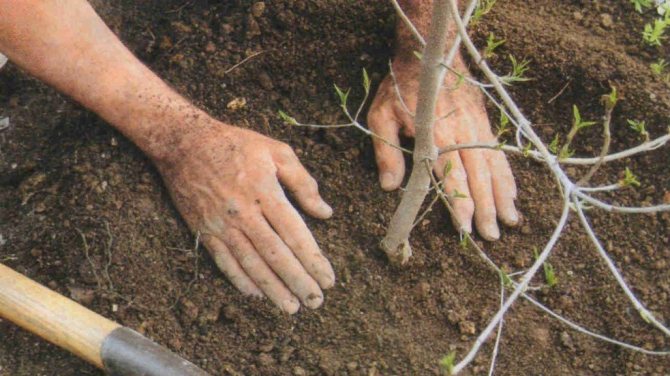

Planting a pear seedling is no different from a similar procedure for other fruit trees
Video: pear seedling planting technology
Yak formvati tree: please buvalikh sadivnikiv
Unimportant to those who love Klappa pear are introduced to winter-hardy varieties, the tree often becomes frost-breaking, which is poured into some of the maybut. Schob unique, it is important to correctly form the crown of the tree. Famous gardeners, who are engaged in growing the variety of pears, will shape the tree in such a rank, but it will not grow too high. For a whole 3-4 rockets, it is necessary to link the central provider to the third tier of giloks. It is important for the farther to grow vertically from the center of the crown. Klapp's love for such a welcomed pear, seeks about the yak, be positive, who does not grow up to 2 m. At the same time, he looks after a tree to a sanitary manner and step-by-step replacement of older hylok with young people.
How to properly care for a plant?
Watering
Pear Favorite Klappa is quite drought-resistant, but this does not mean that you can forget about watering. Especially young trees under 5 years old need regular soil moisture.
If the weather is moderately warm, the summer rate for a young pear is 10-15 liters every 15-20 days. As they grow older, Favorite Klapp is watered less often, but at the same time (45-50 liters of water each). Four waterings per summer are enough for fruit-bearing trees - 50–60 liters each during flowering, the formation of fruit ovaries, and 20–25 days before pear ripening. The last watering (the so-called moisture-charging) is carried out in the middle of autumn. But if it comes out rainy, you can refuse it.
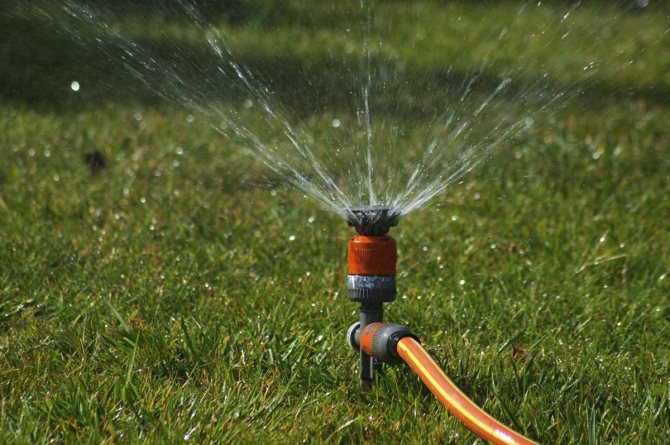

Sprinkling, simulating natural precipitation, allows the soil to be evenly wetted to the required 2–2.5 m
It is best to water the pear by sprinkling. If this is not possible, water is poured into the annular grooves. The last of them should approximately coincide in diameter with the crown. They act carefully so as not to expose the roots. After each watering, the soil in the near-trunk circle is loosened and mulched.
Fertilization
If everything necessary was introduced into the planting pit, then they begin to fertilize the Favorite of Klapp only from the second season.
In the spring, before the beginning of the active growing season, during digging, carbamide, ammonium nitrate, ammonium sulfate (80–100 g per tree annually) are introduced into the soil, and 15–20 liters of manure every 3 years. Or the same amount of fertilizer is diluted in 50 liters of water.
After flowering:
- Watering with an infusion of any fermented greens (nettle or dandelion leaves are most often used). Raw materials are insisted under a lid for at least 3 days, used by diluting with water 1: 6.
- Watering with a solution of Nitroammofoski, Diammofoski. The norm for an adult tree is 150 g per 30 liters of water.
About a month before the fruit ripens, Klapp's pet is fed with phosphorus and potassium. A complex fertilizer for pears or any stone fruit is also suitable, and products containing these substances separately (superphosphate, potassium sulfate).
Non-fertile trees during the summer are watered with infusion of fresh cow dung or bird droppings every 2-3 weeks. It is preliminarily diluted with water in a ratio of 1:10 or 1:12, respectively. Top dressing can be alternated with spraying with a solution of boric acid (2 g / l), copper sulfate (0.5 g / l), zinc sulfate (1 g / l), magnesium sulfate (20 g / l).
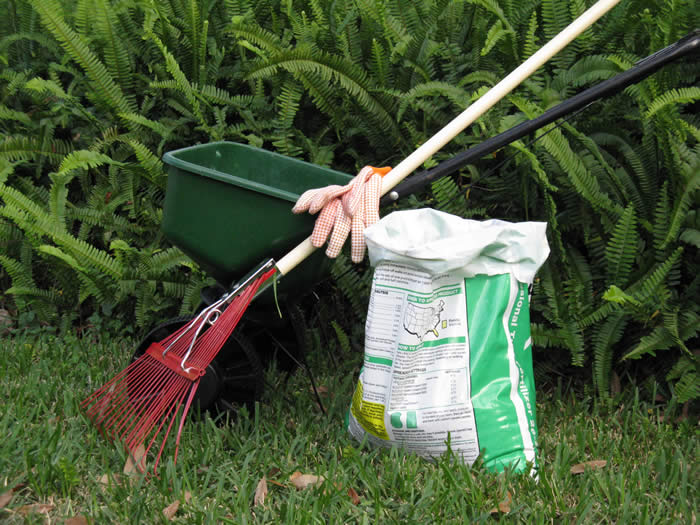

The fertility of the soil for pears is very important, the culture reacts gratefully to both mineral and organic fertilizers
Foliar application of nitrogen fertilizers is allowed until the second decade of September. For Klapp's favorite, spraying with urea is also useful as a prophylaxis for scab. After 10-15 days, the tree is watered with a solution of potassium chloride and simple superphosphate (15 g and 25 g per 10 L of water). Consumption - a bucket for 2 m² of the trunk circle. An alternative is a solution of wood ash (0.5 liters for the same volume). If autumn is rainy, fertilizer can be spread dry under the pear.
Pruning
Pruning for Pet Klapp is an absolutely necessary procedure. It is held twice a year - in autumn and spring.
- Before the growth buds "wake up", they form a crown and remove branches that have suffered from frost in winter.
- In the fall, they carry out mainly sanitary pruning, getting rid of shoots that have suffered from diseases and pests during the season, as well as broken and dried branches.
Schedule the procedure so that there is at least 15–20 days before frost. Pruning is not carried out at temperatures below 5 ° C.
In summer, pruning the pear is not recommended so as not to disrupt the tree's nutritional system (the exception is the removal of last year's shoots that thicken the crown), in winter it is strictly prohibited.


The crown of a young pear begins to form from the second year after planting a seedling in the ground
All instruments used are well sharpened and must be disinfected. Sections are treated with a fungicide solution and carefully covered with garden var. If it is not at hand, you can use oil paint or drying oil. Try not to leave "stumps".
No more than a quarter of the green mass is removed at a time. It is better to cut one large branch than many young shoots. The height of the tree is adjusted by shortening the central shoot.
Video: how to properly trim a pear
Preparing for winter
Mandatory events for Pet Klapp:
- Removing all remaining fruits from the tree - rotten, damaged by insects, affected by diseases, and so on.
- Cleaning the trunk circle from volunteers, dry foliage, broken branches, and other debris.
- Prevention of scab - spraying with a solution of urea (500 g per 10 liters of water).
- Cleaning the damaged areas of the bark with coarse sandpaper, rinsing with a fungicide solution, processing with garden varnish.
Rodents love to feast on pear wood. To scare them off, the trunk, up to the first fork and the lower third of the skeletal branches, are covered with a mixture of slaked lime diluted in water and 2-3% copper sulfate solution. A useful additive is office glue.
Then the tree is wrapped in several layers of burlap or other air-permeable material, branches of conifers are laid out on top. The entire structure is securely fixed with ropes or coated with a mixture of clay and manure, diluted with water to the consistency of thick sour cream. A mound about 0.5 m high is poured around the trunk of sawdust, peat crumbs, humus (straw will not work - mice often settle in it). Snow is shoveled several times during the winter.


The pear must be whitened to scare off rodents.
Further care
According to the gardeners' reviews, the full development and consistently high yields of pears, Lyubimitsa Klapp, will depend on competent agricultural technology.
Organization of watering
Watering pears Favorite Klapp is done by sprinkling. If there is no opportunity for sprinkling, grooves are prepared around the trunk. Watering rate - 2 buckets per tree, increase the frequency of watering in dry seasons. After sprinkling, the near-trunk circle is loosened, providing the roots with air access. However, you should not do too deep loosening so as not to damage the roots of the pear.
- during the flowering period;
- during fetal development;
- during the ripening period.
Pruning pear
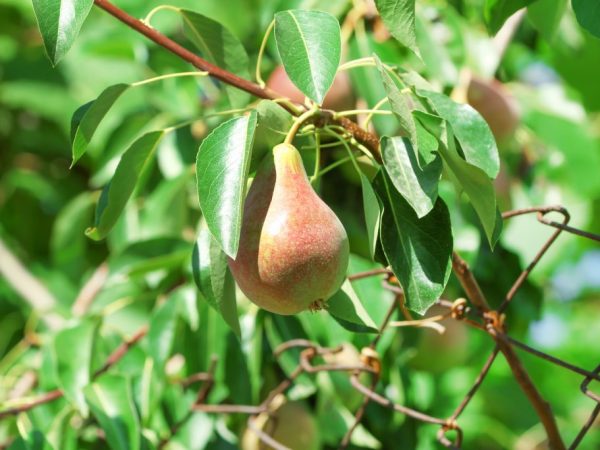

Pear Favorite Klapp, as recommended by the description of the variety and reviews, requires timely pruning, otherwise:
- the tree will grow, shading the area and making it difficult to care for;
- yield will decrease;
- excessive thickening of the crown will create a favorable environment for numerous pests.
Since the tree receives significant stress from pruning, it should be carried out during periods when the pear is at rest and there is no sap flow. The procedure begins from the second year, at the same time forming a strong crown, which is especially important when the branches of the Lyubimitsa Klappa variety are fragile. Pruning is carried out according to the following scheme:
- to stimulate new shoots, the top of an annual seedling is cut off;
- in the second year, three tiers of shoots are formed, choosing those that are located at an angle of 45 degrees to the trunk;
- the central shoot of the pear Favorite Klappa must be cut at a level of 20 cm from the lateral upper branch;
- when removing unnecessary branches, you do not need to cut them too deeply or leave a stump on the trunk - such cuts are difficult to overgrow;
- further, shoots growing inside the crown or parallel to the trunk, as well as dry or damaged branches, are cut off;
- all sections must be lubricated with garden var.
Important! If the fruit on the Klapp pear begins to shrink, rejuvenating pruning is required.
Top dressing
Pear Favorite Klappa is sensitive to fertilizing, only you need to carry them out in a timely manner. In the first 4 years, a 5-centimeter layer of mulch in a near-trunk circle with a diameter of up to 1.0-1.2 m is sufficient for trees. When mulching, the base of the trunk must be left clean so that it does not undermine. In the future, the space for mulching the Klapp pear should be gradually expanded, and organic matter should be introduced along with the autumn digging. At the same time, potash and phosphorus fertilizers are applied in the fall. Nitrogen compounds are useful in early spring before flowering and in summer during the formation of ovaries on the pear.
Description of the pear variety Lyubimitsa Klappa testifies to its susceptibility to scab. However, it can also be affected by other diseases, for example, fruit rot or powdery mildew, fungal pathologies. If signs of disease have already appeared on the leaves of the Klapp pear, all diseased parts must be removed and burned. But the best way to combat diseases of fruit trees is preventive spraying.
There are many drugs available for pest control. Many gardeners also use glue traps, they clean the tree-trunk circles of pears from plant debris in time.
Preparing for winter
To protect the tree in winter from gusty winds, sudden temperature changes, the description of the pear, Favorite Klappa, advises to prepare it for adverse influences:
- the area around the trunk should be cleaned of plant debris, weeds;
- it is good to water the tree, then dig up the trunk circle and mulch it with manure, fallen leaves, straw;
- the trunk must be cleaned of dried bark and moss;
- whitewash the trunk of the pear and the bases of the skeletal branches with a solution of copper sulfate with lime and clay;
- It is good to insulate young seedlings of Klapp pears with burlap or other material.
Common diseases and harmful insects
A significant disadvantage of the Lyubimitsa Klappa variety pear is its weak scab resistance. In addition to her, there are other dangerous diseases, as well as insects that can rob you of your harvest.
Table: diseases and pests that will have to be dealt with when growing pears Favorite Klapp
| Disease or pest | Symptoms | Effective control and preventive measures |
| Fruit rot (moniliosis) | Fruits are covered with rapidly spreading dark brown spots of irregular shape. Then concentric circles of white or beige small tubercles appear on the skin. The pulp turns brown, almost blackens, it is impossible to eat it. Then the fetus shrinks, "mummifies". | Prevention: regular removal of infected fruits from the tree, cleaning the trunk circle from volunteers.The blossoming buds are treated with 3% Bordeaux liquid, after flowering with 1% copper sulfate, after another 10-15 days - with HOM (4 g / l). A month before harvesting, pears are sprayed with a solution of Fitosporin-M or iodine (1 ml per liter of water). After 3-5 days, the treatment is repeated. The norm is 2 liters per adult tree. |
| Scab | Round, velvety to the touch olive spots appear on pears, which gradually turn black and become rough. The fruits stop growing, deform, crack, fall off. | For prevention, trees are sprayed with a 1% solution of any fungicide or powdered with colloidal sulfur - swollen flower buds, blossoming buds, pear ovaries are repeated after another 15–20 days. The last treatment is no later than 20 days before harvest. Alternative - preparations Skor, Abiga-Peak, Horus, Kumir, Alirin. After the end of fruiting, the pear and the soil in the near-stem circle are sprayed with a 5% carbamide solution (2–2.5 liters per adult tree). |
| Powdery mildew | A whitish coating appears on the affected branches, leaves, flowers and pears. Individual stains that are easy to wipe off quickly turn into a continuous layer. Leaves and flowers turn brown, dry, shoots stop growing. The pears are covered with a reddish-brown mesh. | Buds and set fruits are sprayed with a 2% solution of copper sulfate, Bordeaux liquid, copper oxychloride (HOM). If there are signs of the disease, after 3 weeks the treatment is repeated. The development of the disease provokes an excess of nitrogen in the soil, proper feeding with phosphorus and potassium increases the resistance to the pathogenic fungus. Folk remedy (per 10 liters of water) - soda ash (25-30 g) or a mixture of terramycin, penicillin and streptomycin (2-3 g of powder). |
| Rust | Small rounded spots of a rusty-brown color appear on the top of the sheet, and a fleecy yellow-orange bloom below. The spots gradually swell and "bulge". | If there is a juniper on the site, plant a pear as far as possible from it. The tree is sprayed with 5–6% urea solution before leaf buds bloom and after leaf fall. During the summer, 2-3 treatments with Fitosporin-M are carried out. Fungicides, used in the same way as in the fight against scab, help. |
| Pear moth | Adults lay eggs in the fruit ovary. Caterpillars feed on pear pulp, eating seeds. Unripe fruits rot and fall off. | In the fall, they must dig up or loosen the soil in the near-trunk circle in order to destroy the larvae that are going to winter. Butterflies are lured with bright light, placing containers with water next to its sources or hanging glue traps. A good bait is sugar syrup or whey, diluted jam. To attract natural enemies, herbs are planted next to the pear. For prevention, flowering trees are sprayed with Ditox, Bi-58, Rogor, Binom. After 15–20 days, Agravertin, Kinmiks, Iskra-Bio are used. Folk remedy - infusion of wormwood, hellebore or calendula flowers, birch tar (grease pieces of cloth, hang on a tree). |
| Green apple aphid | Insects stick around the leaves from below, tops of shoots and unblown buds. As they suck out the sap, the affected parts of the plant dry out and fall off. | For prophylaxis, once a week or after each rain, the pear is sprayed with infusions of pungent-smelling herbs, citrus peel, hot pepper, tobacco crumbs, mustard powder, and pine needles. To make it "stick" better, add some soap shavings. Oleocobrite, Iskra-Bio, Inta-Vir, Fitoverm are used against aphids that have appeared during the summer. It will take 2-3 treatments. If last year there was a massive invasion of the pest, in early spring pears are sprayed with Nitrafen (30 g / l), the blossoming leaves - with Karbofos (3 g / l). |
| Leaf roll | Caterpillars bite into opening leaf buds and eat them from the inside. These buds dry up. Then they switch to buds and foliage, leaving only streaks.In place of gnawed leaves and buds, spider cocoons appear. | Adults are scared away by the same infusions as aphids. Be sure to spray flower buds and blossoming buds. The cocoons wintering in the soil are destroyed by spilling the near-trunk circle with a solution of Fury, Kinmiks, Rovikurt, Inta-Vir. Fitoverm, Bitoxybacillin, Lepidotsid are effective against adults, Atom, Zolon, Ivanhoe, Terradim are effective against caterpillars. |
| Pear flower beetle | In the fall, female beetles lay their eggs in forming buds. In spring, the larvae eat them from the inside, leaves and flowers do not bloom. | Having found beetles in the fall, after harvesting, the pear and the trunk circle are sprayed with a solution of Aktellik, Ambush, Corsair, Metaphos, Gardona. In early spring, the procedure is repeated. When the leaves are blooming, once every 2-3 days in the early morning, beetles can be shaken off on a cloth or newspaper spread under a tree. |
| Pear gall mite | Insects eat the leaves from the inside. From the outside, it looks like pinkish or yellow-brown growths that turn black over time and become almost flat. In severely damaged leaves, almost all tissues turn black, only a green border remains along the edge. | In the period from bud break to bud fall, 2-3 treatments are carried out with Fufanon, Kemifos, Fitoverm, Vermithek or colloidal sulfur. After picking the pears, the procedure is repeated. An alternative is a mixture of Decis and Inta-Vira (respectively 20 g and 1 tablet per 10 liters of water). |
| Pear honeydew (leaf beetle) | The larvae secrete sticky excrement, sticking together the leaf and flower buds from the inside. Because of this, they cannot bloom. Then they move on to the fruits, eating them from the inside. Pears are deformed, the pulp becomes "wooden", inedible. | Folk remedy - a solution of kerosene (80 ml per 10 liters of water). Spraying is carried out in early spring. Alternative - Karbofos, Nitrofen, Oleocobrite, Trichlormetaphos (2 g / l). Blooming leaves and flower buds are treated with Inta-Vir, Commander, Aktara, Iskra-Bio. At the end of August, the treatment is repeated. During the summer, the pear is sprayed 2-3 times with infusions of wormwood, yarrow, ash, fumigated with tobacco smoke. A rather controversial method - processing pears with a solution of silicate glue ("liquid nails", "liquid glass") - 1-2 g / l. |
| Pear pipe wrench | Golden-green beetles, covered with short hairs, feed on unblown buds and young foliage, removing a thin layer of tissue from the upper side of the leaf, leaving longitudinal stripes. In the same leaves, rolled into a tube, larvae are deposited. | From the moment the leaves appear, the pear is sprayed with Corsair, Votafox, Aktellik, Aktara. The interval between treatments is 15–20 days. The last time - no later than 15 days before harvest. In the fall, the trunk circle must be cleaned, the soil is dug up. |
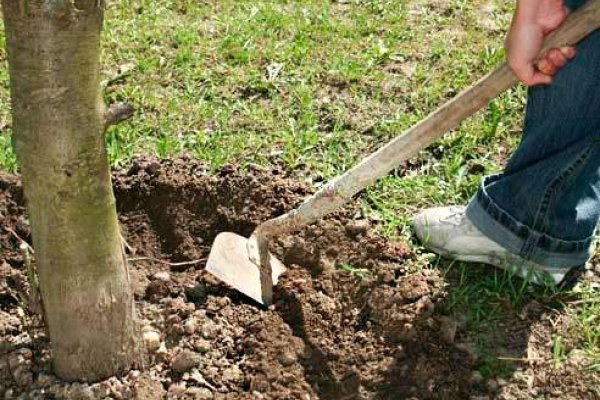

Cleaning and digging up the soil in the near-trunk circle is an important preventive measure that allows you to destroy insect larvae and spores of pathogenic fungi
Photo gallery: diseases and pests from which Pet Klapp suffers
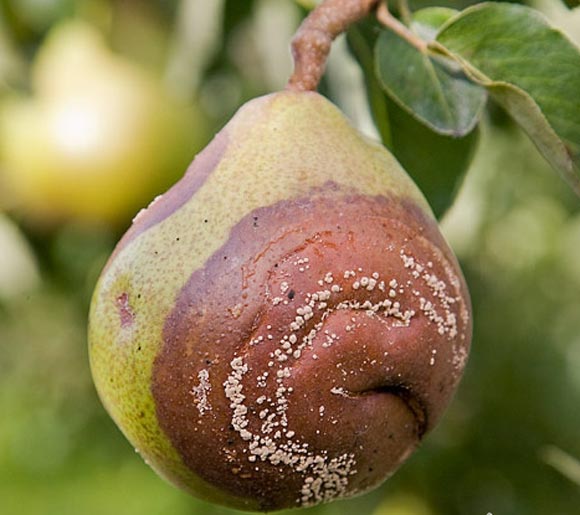

Pears affected by fruit rot are completely inedible.
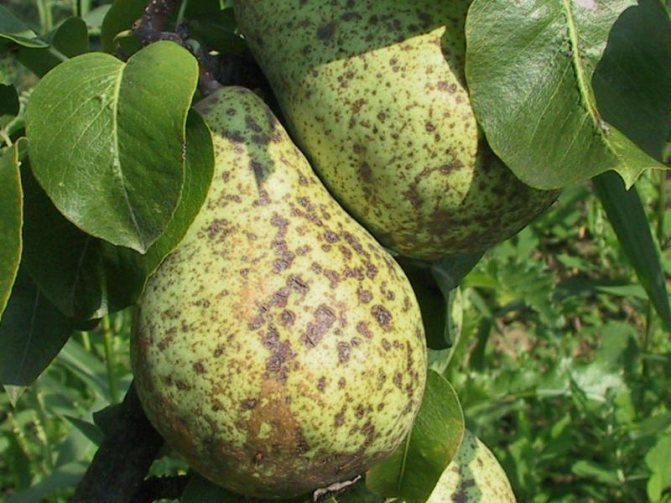

Scab is the most common disease that Klapp's Pet is exposed to.


A whitish coating of powdery mildew seems relatively harmless, but this is by no means the case.


Rust is easy to recognize but difficult to get rid of


The main damage to the crop is caused by caterpillars of the pear moth


Green apple aphids live on fruit trees in whole colonies, pear is no exception.
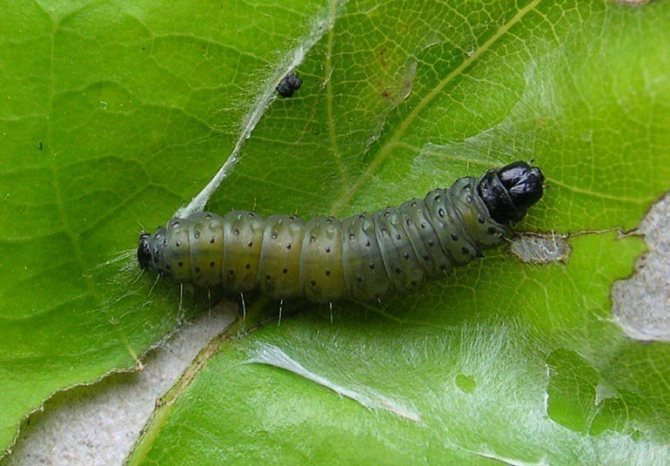

Leafworm caterpillars can leave a pear completely bald in a very short time.
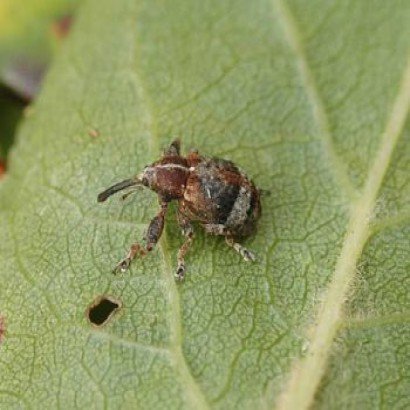

The pear flower beetle in early spring can rob you of a significant part of the harvest.
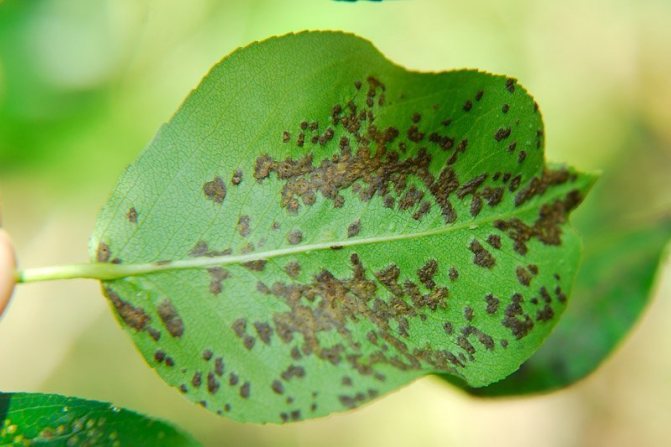

The damage left by the pear gall mite looks like a scab, but the spots are located along the central vein in almost even rows
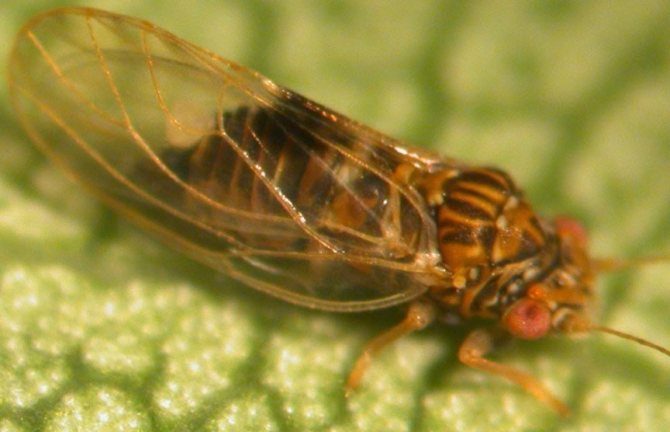

The flesh of pears affected by leaf beetle becomes stiff
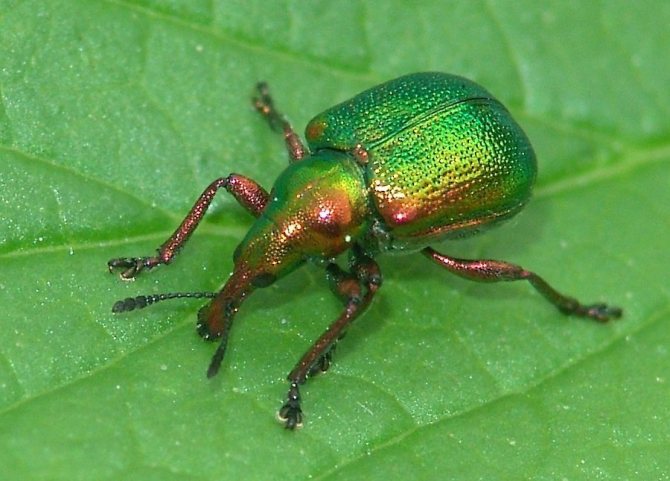

The pear pipe wrench is a cute bug, but you also need to fight with it.
Yak correctly pidzhivlyuvati pear?
The turbot about harvesting will be repaired from the moment of planting the sajantsya. As a rule, the root of young pears is even more sensitive to kindness, so it is more beautiful to bring it in so that it can reach the tree and take root. And to the utmost it is possible to grow beautifully for the help of organics: compost added to the planting pit, peat and increased overflowing pus.
Autumn when a young pear tree is grown before the addition of the same set of organics to the bourgeois cola, as well as phosphorus-and-potassium good. At the mature trees on the right, there are trochas inakshe. So, like a root pear, Lovely Klappa lay down on top of it, it was brought on top of it until it was within reach. In most cases, this method is completely fixed, such as setting the drill holes along the perimeter of the crown, in which the rosters are poured into.
Hinged pear will require nitrogenous goodness. The best for all to go ammophos. In dry weather, you can prick up the crown of a tree, and after an hour the boards are poured into the Sverdlovin. Nitrogen growth followed by pinching from the other half of the litter and introduced "into the race" of the pear tree calium and phosphorus, the zavdyakim pagony vizrivayut more shvidshe. As the soil in the garden is sour, it is important to add to the list of obsolete goodness, like revealing calcium. To remove the excess, so you can bring the tree to a magnified hunger, you can vikorovuvat ashes, introducing її before watering in the pristovburnі cola.
»Home lull» Pear Sweetheart Klappa: describe the variety
Home comfort
How to collect the fruits and where to store them?
Klapp's favorite is a pear variety for which it is very important to guess at the time of harvest. Both unripe and overripe pears lose a lot of taste. If you wait too long, there is a real risk of being left without a crop at all - pears quickly crumble. The hotter it is outside, the faster you need to collect ripe fruits. In cool weather, the harvest period is extended by 4-7 days.
Clapp's pet can be harvested when the greenish undertones of the skin completely disappear, giving way to a sunny yellow tint. The seeds of a ripe pear are uniformly brown, the flesh is snow-white, not greenish. The fruit is easily separated from the branch and acquires a characteristic taste and pronounced aroma.
The fruit has a very delicate pulp, so they are harvested only by hand, leaving the stalk. The pears are removed from the tree, tightly clasping the whole palm (but not squeezing) and gently turning. Only perfectly dry pears are harvested - wait for dew or rain drops to dry. You cannot shake the tree - the fruits that have fallen from it will not lie even for a couple of days. They are put in shallow containers, the bottom of which is covered with a cloth or in special bags or baskets made of soft plastic.
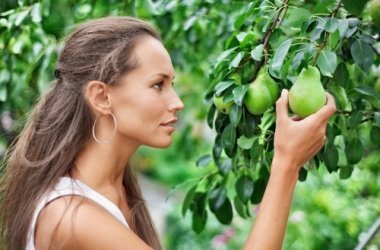

Klapp's pet is removed from the tree very carefully - at first, imperceptible marks from pressing, then quickly darken
You can keep your favorite Klapp fresh only for 10-15 days. First, the pears are sorted out, selecting those that do not have even minimal damage. Put them away for storage as quickly as possible. The temperature is lowered gradually. The fruits are kept in a special compartment of the refrigerator for vegetables and fruits. It is advisable to wrap each pear in a napkin.
Unripe pears will lie a little longer, but at the same time they will not ripen and will not become sweeter than they are.
The only way to preserve the unique taste of summer for a long time is to use winter preparations. From Favorite Klapp you get very tasty jams, compotes, jams, jam. Pears are also dried and dried. The fruits to be processed are removed slightly unripe so that they do not creep into porridge during heat treatment.
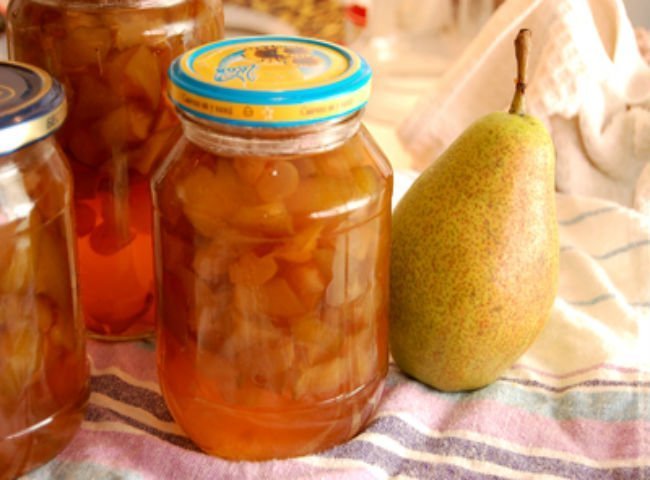

Winter blanks from Favorite Klapp are very tasty
Yak viglyadayut fruit pears Favorite Clappa?
The fruit of the pear given to the variety grows into a wonderful gusto. The їх form is typical for a representative of this group of roslin. Vaga of fruits in the middle become 120-200 g, the growth of which and reach the top of the yield from one tree.The knots on the trees look a little more innocently, so I will grow into a dark red color. The pear is ripe to the variety Klappa is fond of, or, more precisely, say - її plіd, it’s finished yaskravo: zhovtuvatu the surface is embellished with yaskraviy rum’yanets, which curved the large surface. The flesh of the fruit was strong, tighter, and in the mouth. The cultivar has a luring pear aroma. Fruits are ripened in a lime tree or on the ear of a sickle. Knowing the fruits is necessary to grow well before they reach more maturity. Saving pears are not good enough, close to a month, so it is more beautiful to live with them fresh. In addition, the variety is perfect for making mashed potatoes, pre-cooked jams with more sour fruits and berries, as well as compotes.
